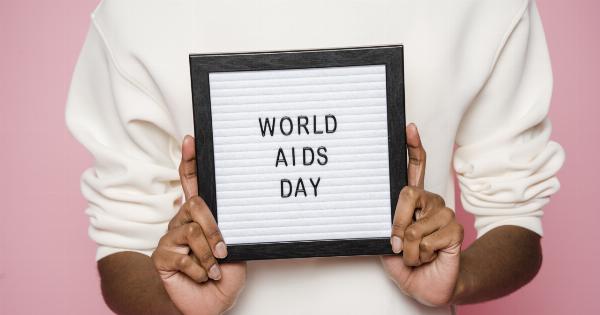Acquired Immunodeficiency Syndrome (AIDS) is a deadly disease that has afflicted millions of people worldwide. HIV, or Human Immunodeficiency Virus, is the virus that causes AIDS.
It weakens the immune system, making it difficult for the body to fight off infections and diseases. Despite the widespread dissemination of information about AIDS, the disease remains a serious threat to the young generation. Young people, especially those between the ages of 15 and 24, remain susceptible to HIV infection.
Why Young People are At Risk of AIDS
The following are some of the factors that contribute to the vulnerability of young people to HIV/AIDS:.
Lack of Knowledge about HIV/AIDS
Many young people have little or no knowledge about HIV/AIDS. A study conducted by UNICEF revealed that only 34% of young people in developing countries have comprehensive knowledge about HIV transmission and prevention.
This lack of awareness increases their risk of contracting the disease. Without proper education about HIV/AIDS, young people cannot protect themselves.
Stigma and Discrimination
Stigma and discrimination against people with HIV/AIDS are still prevalent in many societies. Young people who fear being stigmatized may avoid getting tested or seeking treatment if they suspect they are infected.
In some cases, young people might not disclose their status to their sexual partners, which increases the risk of transmission.
Inadequate Access to Services
Young people may not have access to HIV testing and treatment services due to a lack of resources or inadequate healthcare systems.
Even when young people have access to such services, they may face obstacles such as social stigma, discrimination, or prohibitive costs. In some countries, laws and policies make it difficult for young people to access these services without the consent of a parent or guardian.
Drug and Alcohol Use
Drug and alcohol use impair judgment and increase the likelihood of risky sexual behavior, making young people more vulnerable to HIV infection. Studies show that drug and alcohol use is especially prevalent in young people who are HIV positive.
Lack of Condom Use
Failure to use condoms during sex is a major contributor to the spread of HIV/AIDS. Young people may not be comfortable discussing condom use with their partners or may not have access to condoms.
In some cases, young people may not realize the importance of using condoms or may underestimate their risk of contracting HIV.
The Implications of AIDS on Young People
The impact of AIDS on young people can be devastating. Young people who are infected with HIV may experience discrimination, loss of opportunities, and stigma.
These negative consequences may have long-term effects on their education, employment, and social life. Furthermore, young people who are HIV positive may have difficulty finding suitable partners or starting families, which can contribute to social isolation and depression.
Preventing AIDS among Young People
An effective response to HIV/AIDS requires a comprehensive approach that tackles the root causes of the disease. The following are some of the ways that HIV/AIDS can be prevented among young people:.
Comprehensive Sex Education
Comprehensive sex education programs are essential for teaching young people about safe sex practices, including the use of condoms, the importance of getting tested for HIV, and the consequences of engaging in risky behavior.
Such programs should be designed to provide accurate and age-appropriate information that can empower young people to make informed choices.
Increased Access to Services
Efforts to expand access to HIV testing and treatment services, including pre-exposure prophylaxis (PrEP), will help to reduce the spread of HIV among young people.
Governments and international organizations should invest in healthcare infrastructure and ensure that young people have equal access to HIV prevention and treatment services.
Ending Stigma and Discrimination
Ending stigma and discrimination against people living with HIV/AIDS is critical to reducing the spread of the disease.
Governments, community leaders, and civil society should work together to challenge misconceptions, change attitudes, and ensure that people living with HIV/AIDS are treated with dignity and respect.
Conclusion
The danger of AIDS among young people remains a major threat to public health. It is important to address these underlying causes of HIV/AIDS to ensure that young people have the knowledge, resources, and support they need to protect themselves.
This requires a sustained effort from governments, policymakers, and civil society in order to achieve significant progress and ultimately reduce the spread of HIV/AIDS among the young generation.






























